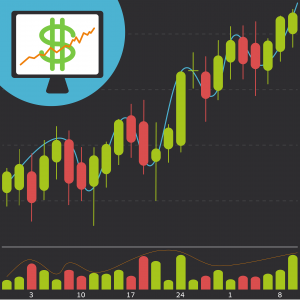Disclosure: Privacy Australia is community-supported. We may earn a commission when you buy a VPN through one of our links. Learn more.
How to Invest in S&P 500 (2024)

To understand how to invest in the S&P 500 you first need to understand what the S&P 500 is and how it works. Now, you may believe that you have an idea of what the S&P 500 is.
And there is a good chance that you have a pretty accurate idea. But if you think that it is as simple as “The top 500 corporations in the United States,” then there is a lot about the definition that you are missing.
Let’s begin with some definitions to help you understand what we are looking at. Namely:
- Market Index
- Market Cap
- Stock
Table of Contents:
- What is a Market Index
- What is Market Cap
- How Does a Stock Exist (and not Exist)
- Investing in the S&P 500
What is a Market Index? 📊️
One of the first things to know about the S&P 500 is that it is not just a list of big corporations. It is a market index. That means it is essentially a database of information that is calculated in a certain way.
In this case, the information in the database is the value of 500 companies in the United States with the highest “market caps” and finding that market cap is the calculation involved in it.
A market cap is an easy word to misunderstand. It sounds like “cap” as in the cap of a bottle, which would lead one to assume that it represents the cap on top of a company’s value in the market.
What is Market Cap? ➡️
But it is actually short for “capitalization”, or how much the company is worth based on the total value of all of their stocks in existence added together.
But you might notice some choice language in that statement: Market capitalization includes all of the stock of a corporation, even if the corporation does not own that stock itself. It also requires the stock to exist. That is more important than you might think.
To recap really quickly, that means that the S&P 500 is not just a list of big companies, but a list of companies that are big in a certain way. It is the 500 companies with the highest market capitalization, meaning that they have the most valuable stocks that exist, regardless of whose hands they are in.
How Does a Stock Exist (and not Exist)?

Obviously the most important note about that definition is that it draws a distinction between companies that are valuable due to the value of their existing stocks, and companies that are valuable due to the value of stocks that do not exist. But how can a stock even be valuable if it does not exist?
The stock market is funny in that it can find ways to attach value to things even if they are not, strictly speaking, real. The stock needing to exist in order to be valuable means two things:
- Stocks that are sold multiple times to different people at the same time are not counted more than once.
- Stocks are not valued in the moment. While the future influences stock prices, it does not determine them.
Investing in the S&P 500 💰️

One of the first thing to note is that the S&P 500 is not a body that you can invest in individually. Because it is an index, the S&P 500 itself is just a database of companies that you can invest in.
But investing in one or more of the companies in the S&P 500 is more than a matter of whether or not you can or cannot. You have to know how to invest, what company to invest in, and when.
How Should you Invest in S&P 500 Companies ➡️
The easiest way to invest in the S&P 500 is by investing in a mutual fund that replicates the performance of the S&P 500. This means that you are not investing directly in any of the S&P 500 companies, but rather investing in the companies that the S&P 500 companies invest in.
Mutual funds are a highly reliable way to grow a portfolio and reap dividends without a huge risk. The reason for this comes down to the structure of the mutual fund itself.
Mutual funds involve a group of people pooling their money, which is then managed by a fund manager. This fund manager acts as a broker, investing the money and then giving each member a dividend.
How S&P 500 Companies Work ➡️
How most S&P 500 companies work is that when they want to invest in a company, rather than actually spending money they instead trade their stock for the stock of the company they wish to invest in.
This means neither company spends money, but both are invested in the earnings of the other since they have traded each other’s stock.
Once a S&P 500 company invests their stock in another company (we’ll call it Company B), you can be sure that the S&P 500 company has determined themselves to support Company B.
It is easy to imagine mega corporations like those that makes up the S&P 500 to be quick to cut their losses and run.
But that is because it is easy to get into the mode of thinking that the companies in the S&P 500 are just numbers in an index. Each of those companies is a business full of people who are producing products.
That means that they have needs. If they invest in Company B, then it is not just because Company B can make them money. It is more often because Company B can make them something no one else can.
How This Benefits Mutual Funds ➡️
For that reason, a mutual fund that mimics the investments of one or more of the S&P 500 companies will generally be investing in industries and companies that will see growth and support pretty soon.
There are certainly other ways to invest in the S&P 500, but this is not only the easiest but the cheapest. All you need is the capital to get into the mutual fund. Compare this to actually investing in the stocks of an S&P 500 company, where each stock costs multiple thousands of dollars.
A mutual fund will cost you one-tenth as much. Granted, it will not provide returns as quickly, but even the most short-term investments in S&P 500 companies tend to be incredibly pricy.
When Should you Invest in S&P 500 Companies? ⏰️
Understanding the movements of the S&P 500 is like understanding the weather: You can see where it was, and have an idea of where it is going, but all sorts of unexpected things can change it at any time.
The classic adage in the stock market is “buy low, sell high”. The challenge of doing this is knowing whether something is at its lowest to buy, and when it is at its highest to sell. But knowing that would require perfect knowledge of the market—knowledge that we already established cannot exist.
Instead of looking to buy at the lowest and sell at the highest, it is far easier to buy at the upward slope and sell at the downward slope. Sure, you will not make as much money as if you invested perfectly.
But the only people who are actually able to do that are insider traders anyways, so it is a moot point.
When an S&P 500 invests in Company B, there will be a brief moment where its stock prices will dip to represent the uncertainty of the investment.
If the investment is highly certain, then this will not happen. What happens after that dip is either going to be a drop, where the uncertainty is perceived as being true, or a reversal, where the uncertainty is seen as being unwarranted.
All of this means you should invest in:
- Stock price dips
- Stock price drops
- Stock price reversals
It also means you should avoid:
- Rising stock prices
- Plateauing stocks
What S&P 500 Companies should you Invest In? ➡️

When it comes to investing in the S&P 500 you have to remember that the normal rules of investment are hard to follow. The most common first step in making an investment strategy is figuring out what businesses are in growth industries that will see 10 to 15 years of growth.
All of the S&P 500 companies are in growth industries, so that metric flies out the window.
They may have their rises, reversals, and dips in value, but it would take a natural disaster to unseat them from the top of the American corporate food chain.
But not all of them are created equal, and some should be invested in over others.
Currently the 500 companies in the S&P 500 cover about 60 industries. But some industries are represented more frequently than others.
For instance, 15 of the 500 companies do their business around semiconductors. But only one company in the whole of the S&P 500 does business in gold.
If you were to try and find out which semiconductor company to invest in, then you would have to examine the competition between all fifteen of the companies competing in the field among the S&P 500. And even then, you would likely have to pull information from semiconductor companies that aren’t in the S&P 500 in order to get an idea of what kind of competition is really going on.
If you wanted to invest in gold, however, then you know exactly which gold company is the best in the business: The one in the S&P 500.
Or rather, that is the gold company that is the best in the business for you, as the one in the S&P 500 (Newmont, if you are curious) is the one with the highest market cap.
Invest in Industry Leaders
In short, the S&P 500 index can be used for its intended purpose: Figuring out which companies are at the top of their industries. And this is most easily determined by looking for the isolated representatives of each industry within the S&P 500.
Now, you should take this advice with a grain of salt with some industries. The S&P 500 could just as well be called the S&P 525 or S&P 550 for how often the same companies are removed from the top 500, only to be added back in the next year (and visa versa).
Avoid Service Industries
Just because a company explodes into the S&P 500 does not mean they are going to stay there.
The industries that are likely to stay there are the ones that deal in producing physical commodities. Gold is a good example, as it is a unique mineral: It is beautiful, used to back lots of currencies, and even has conductive properties that make it useful in electronics and wiring.
Other industries, like aerospace, combine materials to make things. The big thing you want to avoid investing in is the “application software” industry. That one has seen so many companies enter the S&P 500 and then leave, never to be seen nor heard from again that none of them can be relied upon.
You might intuitively think that “application software” means “big tech”, but application companies just make applications. Big tech companies (technically called “information technology” companies) tend to produce the actual products that run the apps.
Conclusion 💡️

Investing in the S&P 500 can be challenging due to the need for meticulous and technical analysis of trends and the movements of tangible resources in the real world. It is a process that goes beyond relying solely on numerical data. However, one aspect of investing in the S&P 500 that is relatively uncomplicated is accessibility.
Find the right app, the right broker, or the right mutual fund, and you will be well on your way to investing in them as long as you know how.
You Might Also Like:






